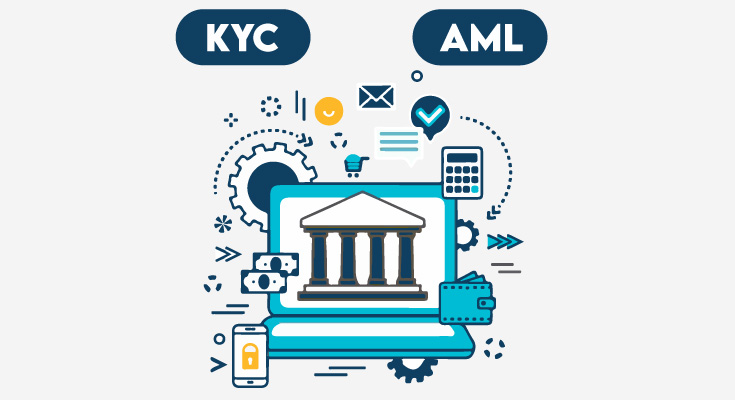The main purpose of Know Your Customer (KYC) and Anti-Money Laundering (AML) regulations is to limit or reduce the possible consequences of financial crimes or prevent such activities. These include money laundering, terrorist financing, corruption, and other illegal activities. Expert in the field of financial technologies Roman Tereshchenko emphasizes that KYC and AML rules are mandatory for organizations that are suspected of possible assistance financial crimes. In this context, regulators are particularly monitoring financial institutions (FIs). These rules may also apply to other sectors, ranging from casinos to art galleries. How they work and develop in the modern world – in an analytical review from a financial technology expert.
Compliance with KYC and AML rules: key trends in global financial institutions
In some countries, KYC and AML rules (together they form AML – Anti-Money Laundering and Anti-Terrorism Financing Regulations) have not yet been developed, and in some jurisdictions, they are much stricter than others. For example, the European Union has AML6, while the US has the Bank Secrecy Act. Therefore, a financial analyst recommends that you always refer to the specific rules of your country or region. And statistical data shows that it is necessary to contact them.
– Research from Fenergo, shows that regulators took $4.2 billion in enforcement actions due to AML violations in 2022, down 22% from the year before. Data for 2023 shows a downward trend in the average number of employees involved in customer verification (KYC) by 14% compared to 2022. However, the global cost of one KYC check increased by 17% – to $2,598, which indicates an increase in the costs of applying these rules in general. – Roman Tereshchenko comments on global trends.
If we talk about global banks, in 2022 they were fined $5 billion for violations of AML rules, which is 50% more than the previous year. This has forced banks to actively invest significant resources in compliance, including improving onboarding processes.
According to the analyst, the banks’ position is correct; he recommends that fintech companies move in a similar direction. He argues his point of view by saying that failure to comply with AML and KYC requirements can have serious consequences for financial institutions. In Roman Tereshchenko’s interpretation they look like this:
- Promoting criminal and terrorist activities.
- Fines and sanctions.
- Loss of trust and reputational damage.
- Increased financial and operational risks.
To avoid such consequences, financial institutions should still consider the benefits and impact of the interaction of AML and KYC technologies.

Innovative KYC technologies reviewed by Roman Tereshchenko: advantages in the fight against financial crimes
For most institutions, AML starts with the KYC process. It includes verifying the client’s identity, assessing his risks and goals, and monitoring financial transactions for suspicious activity. This allows companies to effectively combat financial crime and comply with AML requirements. With the development of modern technologies, KYC is moving forward every day and introducing innovative aspects into the process of its activities. Roman Tereshchenko says that this approach demonstrates positive dynamics, expressed in the following advantages:
- Activity Detection: A key aspect of KYC that ensures a customer’s authenticity through physical confirmation of their presence, including facial movement analysis and interactive tasks.
- Voice biometrics: An innovative method of analyzing voice characteristics for identity verification, especially in remote verification.
- Facial recognition: Analyzes facial features and accurately matches live images to identity documents.
- Document Validation: Automatically extract and validate data from documents, including OCR, NFC, and machine learning technologies.
- NFC technology: Simplify data exchange for KYC with increased efficiency and security.
- Blockchain for Data Security: Ensuring that customer data is stored and shared securely and compliantly.
- Artificial intelligence (AI) and machine learning (ML): Analyze data to detect anomalies and fraud.
- Electronic ID (eID) verification: Online identification using electronic documents.
- RegTech Solutions: Automate KYC processes for compliance and continuous monitoring.
- Behavioral biometrics: Analyzing behavior patterns for continuous authentication and fraud prevention.
- Enhanced Identity Verification: Using biometrics to improve KYC security and accuracy.
That is, KYC and AML are two mandatory procedures for compliance with rules and measures to combat financial crimes. KYC focuses on identity verification and customer risk assessment, while AML includes a broader set of techniques such as transaction monitoring, sanctions, and PEP screening. The expert argues that KYC is part of AML, which helps ensure better compliance with regulations and prevent illegal financial transactions. Roman Tereshchenko emphasizes that these two components should be an integral part of the activities of financial companies that seek to operate in a legitimate field.



